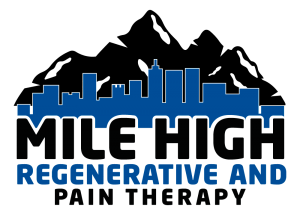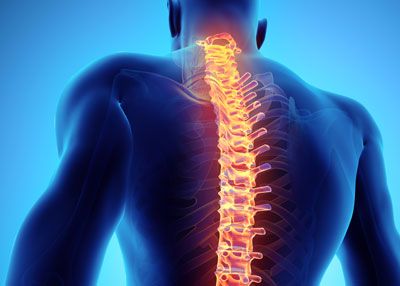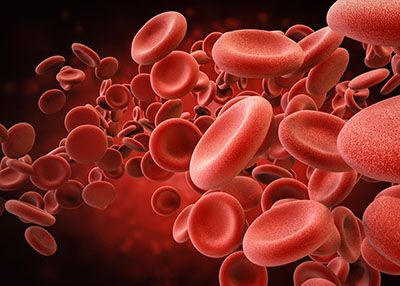What is reflex sympathetic dystrophy/complex regional pain syndrome?
Complex regional pain syndrome (CRPS) is an uncommon, chronic condition that usually affects your arm or leg. Rarely, complex regional pain syndrome can affect other parts of your body.
Complex regional pain syndrome is marked by intense burning or aching pain. You may also experience swelling, skin discoloration, altered temperature, abnormal sweating and hypersensitivity in the affected area.
The cause of complex regional pain syndrome isn’t clearly understood, though it often follows an illness or injury. Treatment for complex regional pain syndrome is most effective when started early. In such cases, dramatic improvement and even remission are possible.
The main symptom of complex regional pain syndrome is intense pain, which gets worse over time. Additional signs and symptoms include:
- “Burning” pain in your arm, leg, hand or foot.
- Skin sensitivity.
- Changes in skin temperature color and texture. At times your skin may be sweaty; at other times it may be cold. Skin color can range from white and mottled to red or blue. Skin may become tender, thin or shiny in the affected area.
- Changes in hair and nail growth.
- Joint stiffness, swelling and damage.
- Muscle spasms, weakness and loss (atrophy).
- Decreased ability to move the affected body part.
Symptoms may change over time and vary from person to person. Most commonly, swelling, redness, noticeable changes in temperature and hypersensitivity (particularly to cold and touch) occur first. Over time, the affected limb can become cold and pale and undergo skin and nail changes as well as muscle spasms and tightening. Once these changes occur, the condition is often irreversible.
Complex regional pain syndrome occurs in two types with similar signs and symptoms, but different causes:
- Type 1. Previously known as reflex sympathetic dystrophy syndrome, this type occurs after an illness or injury that didn’t directly damage the nerves in your affected limb. About 90 percent of people with complex regional pain syndrome have type 1.
- Type 2. Once referred to as causalgia, this type follows a distinct nerve injury.
Many cases of complex regional pain syndrome occur after a forceful trauma to an arm or a leg, such as a gunshot wound or shrapnel blast. Other major and minor traumas — such as surgery, heart attacks, infections, fractures and even sprained ankles — also can lead to complex regional pain syndrome. It’s not well understood why these injuries can trigger complex regional pain syndrome
Diagnosis of complex regional pain syndrome is based on a physical exam and your medical history. There is no single test that can definitively diagnose complex regional pain syndrome, but the following procedures may provide important clues:
- Bone scan. A radioactive substance injected into one of your veins permits viewing of your bones with a special camera. This procedure may show increased circulation to the joints in the affected area.
- Sympathetic nervous system tests. These tests look for disturbances in your sympathetic nervous system. For example, thermography measures the skin temperature and blood flow of your affected and unaffected limbs. Other tests can measure the amount of sweat on both limbs. Dissimilar results can indicate complex regional pain syndrome.
- X-rays. Loss of minerals from your bones may show up on an X-ray in later stages of the disease.
- Magnetic resonance imaging (MRI). Images captured by an MRI device may show a number of tissue changes.
Dramatic improvement and even remission of complex regional pain syndrome is possible if treatment begins within a few months of your first symptoms. Often, a combination of various therapies is necessary. Your doctor will tailor your treatment based on your specific case. Treatment options include:
Medications
Doctors use various medications to treat the symptoms of complex regional pain syndrome. Over-the-counter nonsteroidal anti-inflammatory drugs (NSAIDs), such as aspirin, ibuprofen (Advil, Motrin, others) and naproxen sodium (Aleve), may ease pain and inflammation. In some cases, doctors may recommend prescription medications. For example, antidepressants, such as amitriptyline, and anticonvulsants, such as gabapentin (Neurontin), are used to treat pain that originates from a damaged nerve (neuropathic pain). Corticosteroids, such as prednisone, may reduce inflammation.
Your doctor may suggest bone-loss medications, such as alendronate (Fosamax) and calcitonin (Miacalcin). Opioid medications may be another option. Taken in appropriate doses, they may provide acceptable control of pain. However, they may not be appropriate if you have a history of substance abuse or lung disease.
Some pain medications, such as COX-2 inhibitors (Celebrex), may increase your risk of heart attack and stroke. It’s wise to discuss your individual risks with your doctor.
Therapies
- Applying heat and cold. Applying cold may relieve swelling and sweating. If the affected area is cool, applying heat may offer relief.
- Topical analgesics. Various creams are available that may reduce hypersensitivity, such as lidocaine or a combination of ketamine, clonidine and amitriptyline.
- Physical therapy. Gentle, guided exercising of the affected limbs may improve range of motion and strength. The earlier the disease is diagnosed, the more effective exercises may be.
- Sympathetic nerve-blocking medication. Injection of an anesthetic to block pain fibers in your affected nerves may relieve pain in some people.
- Transcutaneous electrical nerve stimulation (TENS). Chronic pain is sometimes eased by applying electrical impulses to nerve endings.
- Biofeedback. In some cases, learning biofeedback techniques may help. In biofeedback, you learn to become more aware of your body so that you can relax your body and relieve pain.
- Spinal cord stimulation. Your doctor inserts tiny electrodes along your spinal cord. A small electrical current delivered to the spinal cord results in pain relief.




